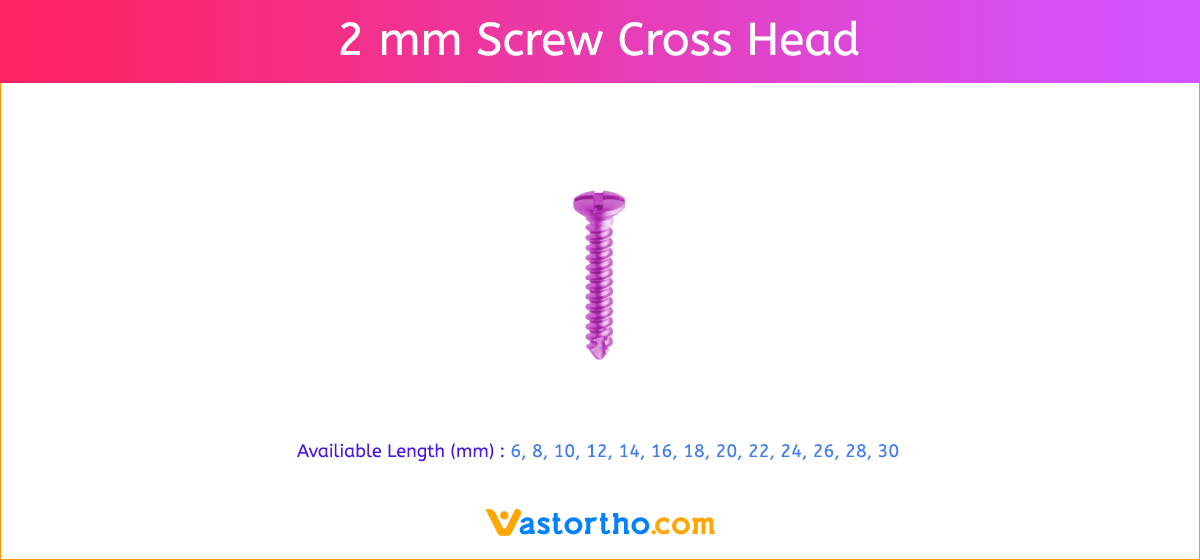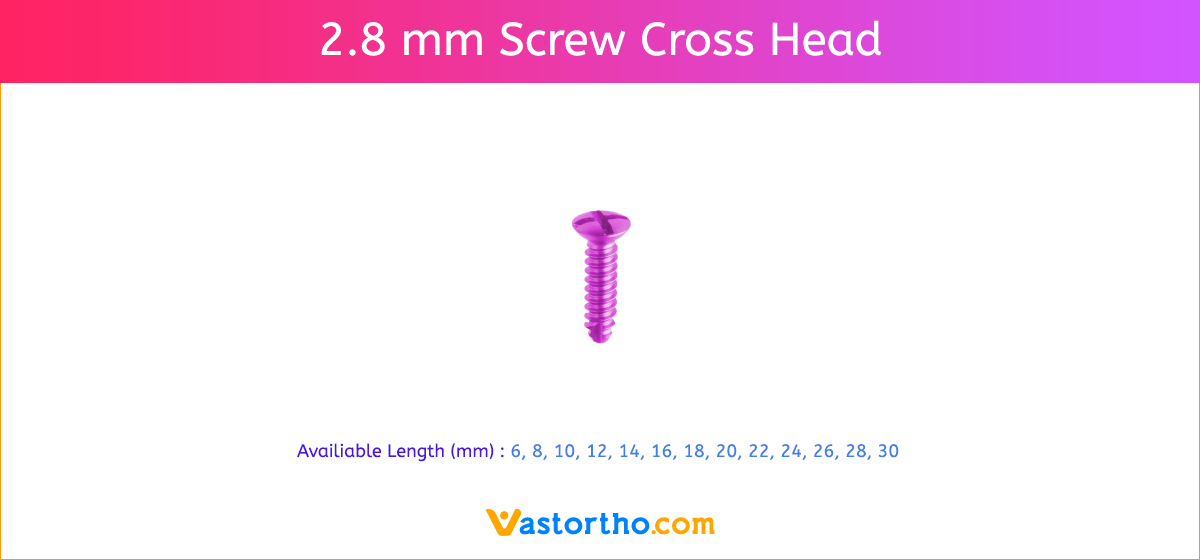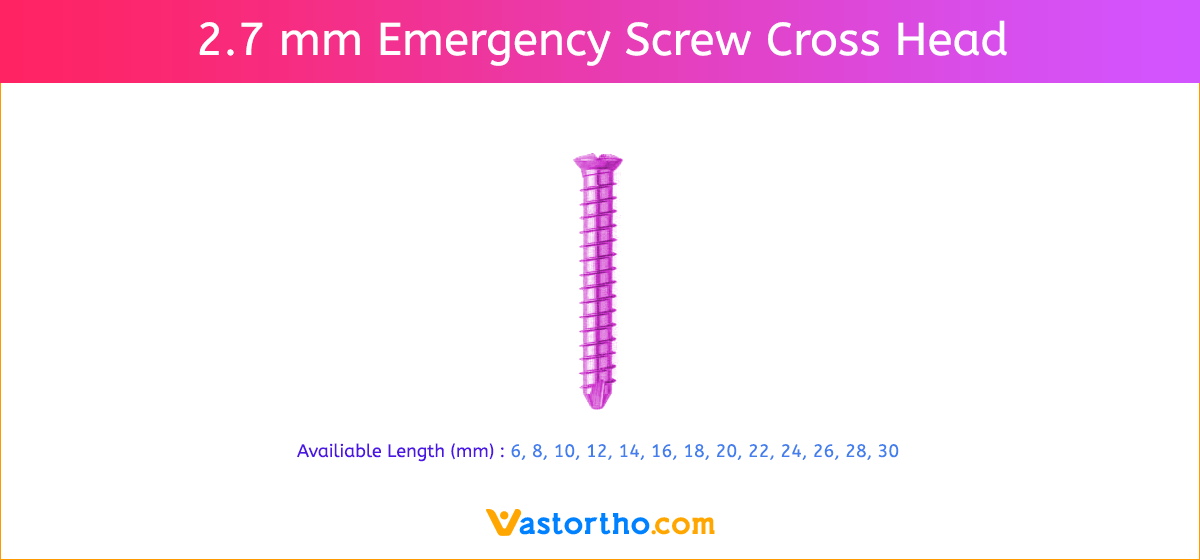2 mm Screw Craniomaxillofacial Specification, Uses & Sizes
- 2 mm Screw Craniomaxillofacial available lengths are 8mm, 10mm, 12mm, 14mm, 16mm, 18mm, 20mm, 22mm, 24mm, 26mm, 28mm and 30mm.
- Screws are made from pure Titanium and SS 316L.
- Any additional length sizes of this screw will be made on demand.
- This is Cross Head screw.
- Instruments are available for this screw such as Bone Taps, Combined Drill & Tap Sleeve, Counter Sink, Depth Gauge, Drill Bits, Drill Guide, Drill Sleeve, Hollow Mill Screw Removal, Reverse Measuring Device, Screw Drivers and Screw Holding Forceps etc.

2 mm Screw Craniomaxillofacial Indications
2 mm Screw Craniomaxillofacial is intended for oral, maxillofacial surgery; trauma and reconstructive surgery, specifically for fractures of the subcondylar region of the mandible and fractures of the condylar basis region of the mandible.
2 mm Screw Craniomaxillofacial Contraindications
Screw is contraindicated for use in Acute or chronic, local or systemic infections, Allergy to implant material and Insufficient bone quality to secure implant.









